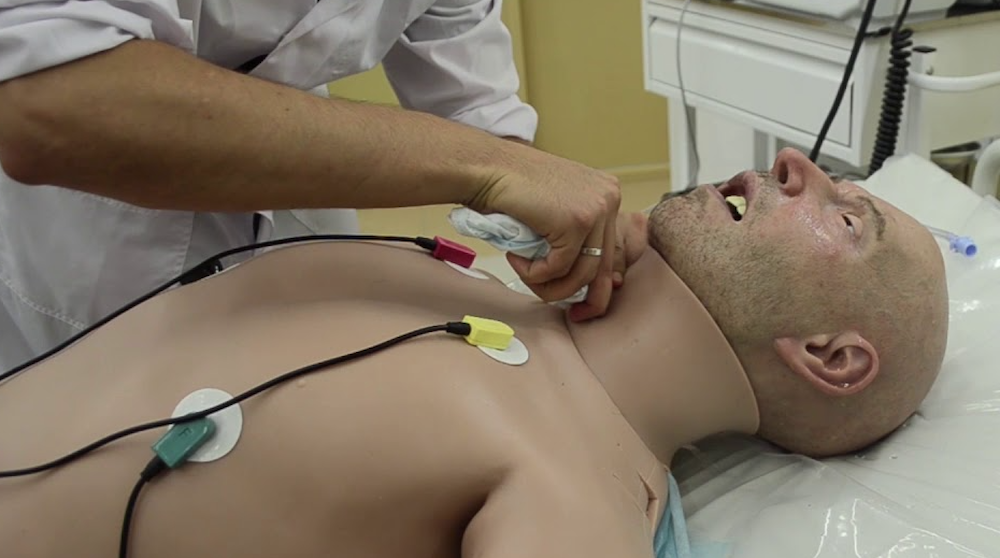Patient Simulator
A patient simulator is any kind of manikin that mimics human anatomy or function (physiology) which can be used to educate students and train healthcare professionals in healthcare simulation. Patient simulators are most frequently used in clinical simulation centers and come in a variety of models, from preterm infant patients to geriatric patients. Patient simulators also include obstetric birthing simulators, surgical simulators, military simulators and more. The level of realism is referred to as fidelity, and is explained further alongside some of the leading patient simulator manufacturers and uses from the field.
The benefits of using healthcare simulation to improve medical education is now well documented in the literature. Clinical expertise comes with practice and experience. Clinical Simulation allows practitioners of all levels and healthcare disciplines the opportunity to practice and improve their clinical skills without any potential harm to patients. Patient simulators are most often used in academic institutions, academic medical centers, government research organizations, hospitals and clinics and military training centers. The more than 2.5 billion dollars generated worldwide by the companies that manufacture and develop human simulators speaks to the spread of their use around the globe.
Patient simulators are broadly divided into low, mid and high-fidelity patient simulator categories. The level of fidelity identifies the degree to which the patient simulator can replicate various human physiological functions. Low fidelity patient simulators or task trainers are simple, static models which are often used for repetitive task education such as insertion of urinary catheters or insertion of intravenous lines. Simple silicone wound models allow learners to change dressings or practice placement of sutures. Basic cardiopulmonary resuscitation patient simulators are used extensively to train professionals and the public how to perform chest compressions and rescue breaths (CPR education).
Sponsored Content:
Mid-fidelity patient simulators are more complex. Many contain electrical components that mimic basic body functions such as cardiac and respiratory function. These patient simulators can be used for simple simulations where the learner needs practice assessment of vital signs or they can be used in simple scenarios where interpretation of complex physiological functions is not required. Patient simulators are used extensively for basic nursing education. For example, first year nursing students practice administration of medications. Some medications can only be given when vital signs are within certain limits.
HealthySimulation.com is dedicated to providing the latest Patient Simulator news and healthcare simulation resources from around the world. To follow along, sign up for our free medical simulation email newsletter, follow @HealthySim on Twitter and @HealthySim on Facebook, or join our HealthySimulation.com LinkedIn Company Page!
Patient simulators can be programmed with basic cardiac, circulatory and respiratory data. Learners must first assess the patient simulator and then make an independent decision about whether there is safety to either give or withhold medication. These clinical decisions build clinical competence and expertise through healthcare simulation with the use of a patient simulator. The ability to practice with patient simulators shortens the time needed to learn new clinical skills, prepares the learner ahead of actual patient contact and most importantly, reduces the risk of potentially fatal errors.
Sponsored Content:
At the highest end of the scale, whole body patient simulators, like the SimMan3G from Laerdal, can simulate (mimic) multiple complex body systems. A patient simulator is considered high-fidelity when the functions closely resemble human physiology. For example, high-fidelity patient simulators have chests that rise and fall, variable respiratory rates, audible chest sounds, palpable pulses, audible cardiac sounds, normal and abnormal cardiac rhythms such as asystole, and bowel sounds to name but a few. Patient simulators can cry, their pupils constrict, they can shake as if having a seizure and they can speak. Many have pre-recorded statements such as “my chest hurts” or “I feel like I’m going to throw up” and others can transmit speech from an educator in another room.
As technology has advanced with the introduction of AI, there is more complex and human-like communication that is able to occur between learner and patient simulator. Effective communication skills are crucial for health professionals to increase patient satisfaction and also patient safety through acquisition of effective communication skills to challenge concerns effectively in the healthcare ecosystem. Some patient simulators have inbuilt AI communication capabilities so that the student can converse with AI through the patient simulator. This technology will only continue to advance in times to come in healthcare simulation.
View the LEARN CE/CME Platform Webinar Elevate Your Healthcare Simulation Impact with Laerdal’s Latest Innovations to learn more!
High fidelity patient simulators are complex pieces of machinery. They are operated by a specially trained healthcare simulation technologist who is responsible for not only the operation of the patient simulator but also for preparation of an entire clinical simulation. This can include but is not limited to: maintenance of supply levels, record and playback of clinical simulation events if video is used, services to the patient simulator and the ability to troubleshoot any problems that arise.
Some healthcare simulation scenarios will require multiple clinical simulation technologists. Often, these specialists are in a separate control room with multiple computers and screens. A clinical simulation educator, also known as a content expert, oversees the learners. In ideal circumstances the clinical simulation educator enables learners to reach the clinical objectives for the healthcare simulation scenario. Clear learning objectives are always central to an effective clinical simulation scenario.
Some of the high-fidelity patient simulators such as those from Elevate Healthcare, Laerdal or Gaumard are highly specialized. For example, trauma patient simulators are designed to train healthcare practitioners in the military or emergency departments. The patient simulator may have partially severed limbs or burn injuries. These emergencies require the medical team to respond rapidly to save lives. Mass-casualty simulations that involve multiple patient simulators, provide responders drills for emergency response systems, triage education and team interactions.
To learn more about high fidelity patient simulators and not have to wait for healthcare simulation conferences like SimGHOSTS, IMSH, or INACSL, then complete the form through the link below to be connected with leading manufacturers now.
Click Here to Instantly Connect to Leading Patient Simulator Manufacturers Now!
Birthing manikins, or Birth Simulators, simulate labor, delivery, newborn emergencies and postpartum critical events. The patient simulators can deliver babies in the normal head down position or in other positions where quick interventions to save a baby or mother are required. Neonatal and pediatric teams can practice care required for preterm babies or babies with other complex health requirements.
Obstetricians and midwives can practice clinical care for the mother with postpartum hemorrhage or cardiac arrest with a high fidelity patient simulator. Since the above events may not occur very often, clinical simulation provides an opportunity for the clinical teams who care for mother and baby to practice and be ready. Pediatric patient simulators of various ages are used extensively to address health issues specific to a given developmental level of the pediatric patient population group.
Patient simulators play a vital role in the preparation of the next generation of healthcare practitioners, aid in development of new products and clinical procedures and ultimately improve patient safety and save lives. With the advancement of new technology such as AI communicators that are now built into high fidelity patient simulators, the fidelity of patient simulators will only continue to expand.
Human Patient Simulator Latest News
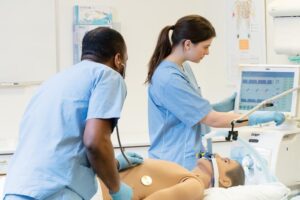
Laerdal Introduces SimMan Critical Care
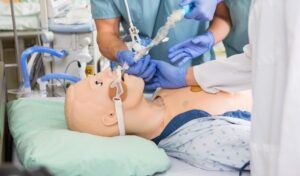
Key Considerations for High Fidelity Healthcare Simulation

Nasco Healthcare’s DANi Teenage Young Adult Patient Simulator Meets Dynamic Population Needs
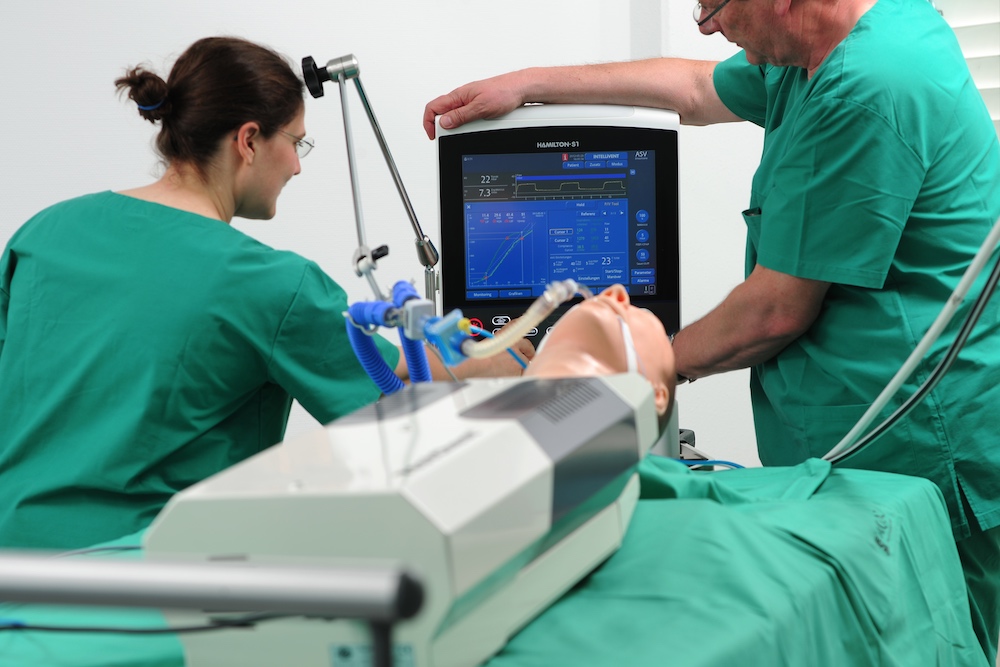
neosim TestChest Artificial Lung to Simulate Mechanical Ventilation

Assistant Dean of Medical Education Shares Benefits of PCS Spark in Clinical Setting

A Quick Guide to Birthing Simulators & OBGYN Simulation
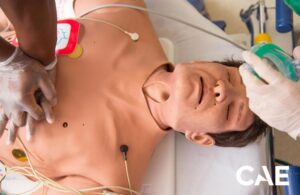
CAE Healthcare Patient Simulators Improve Nursing Preparedness
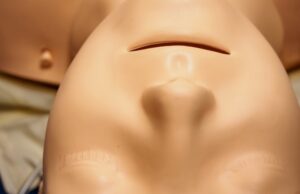
How to Make a Clinical Simulation ‘SALAD’ Simulator
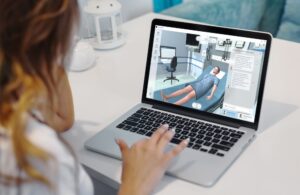
CAE Healthcare Suite of Digital Products Enhances Virtual Learning Experiences

Creating the ‘Always Learning’ Virtual Patient
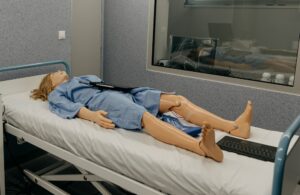
Healthcare Simulation Technology Specialist and Simulation
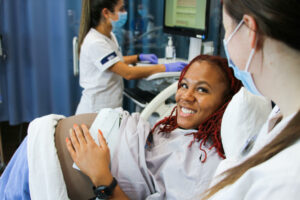
Benefits of Utilizing Wearable Simulator Technology Across Medical Education
Sponsored Content:



